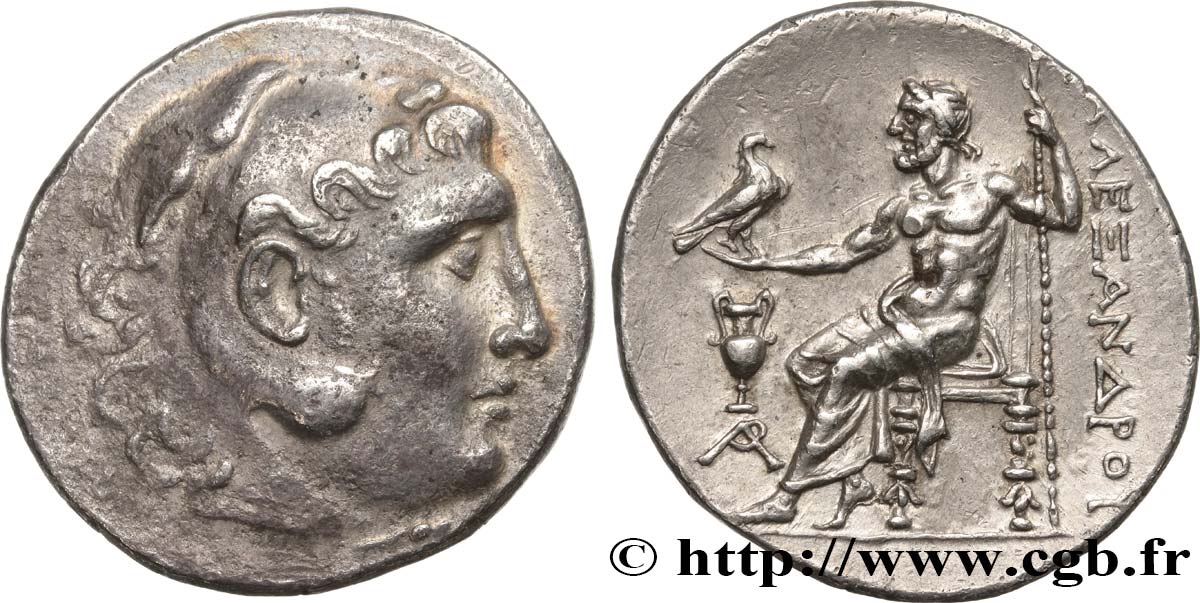Live auction - bgr_511595 - IONIA - IONIAN ISLANDS - CHIOS Tétradrachme
You must signin and be an approved bidder to bid, LOGIN TO BID. Accounts are subject to approval and the approval process takes place within 48 hours. Do not wait until the day a sale closes to register. Clicking on "BID" constitutes acceptance of the terms of use of cgb.fr private live auctions.
Bids must be placed in whole Euro amounts only. The sale will start closing at the time stated on the item description; any bids received at the site after the closing time will not be executed. Transmission times may vary and bids could be rejected if you wait until the last second. For further information check the Live auction FAQ
All winning bids are subject to a 18% buyer’s fee.
All winning bids are subject to a 18% buyer’s fee.
| Estimate : | 500 € |
| Price : | 340 € |
| Maximum bid : | 350 € |
| End of the sale : | 29 October 2019 14:21:38 |
| bidders : | 2 bidders |
Type : Tétradrachme
Date: c. 270-220 AC.
Mint name / Town : Chios, Ionie
Metal : silver
Diameter : 29,5 mm
Orientation dies : 12 h.
Weight : 16,87 g.
Rarity : INÉDIT
Coments on the condition:
Exemplaire sur un flan large et ovale bien centré. Tête massive d’Héraklès. Très joli revers de style fin, de haut relief, bien venu à la frappe. Jolie patine de collection ancienne, légèrement granuleuse au droit
Catalogue references :
Predigree :
Cet exemplaire provient de la collection B. Odaert
Obverse
Obverse legend : ANÉPIGRAPHE.
Obverse description : Tête imberbe d’Héraklès à droite, coiffée de la léonté.
Reverse
Reverse description : Zeus aétophore, nu jusqu’à la ceinture assis à gauche, les jambes croisées sur un siège ornementé sans dossier, tenant un aigle de la main droite tendue et un sceptre long de la main gauche ; dans le champ à gauche, une amphore surmontant un monogramme.
Reverse legend : ALEXANDROU// (AR)
Commentary
Nous n’avons pas relevé d’identité de coin pertinente pour ce type à cause de l’état de conservation du droit. Semble inédit et non recensé. Manque aux ouvrages de référence. Ce type avec l’amphore pourrait aussi émaner de l’atelier de Myrhina (MP. 1648-1649) mais resterait inédit.








 Report a mistake
Report a mistake Print the page
Print the page Share my selection
Share my selection Ask a question
Ask a question Consign / sell
Consign / sell
 Full data
Full data








